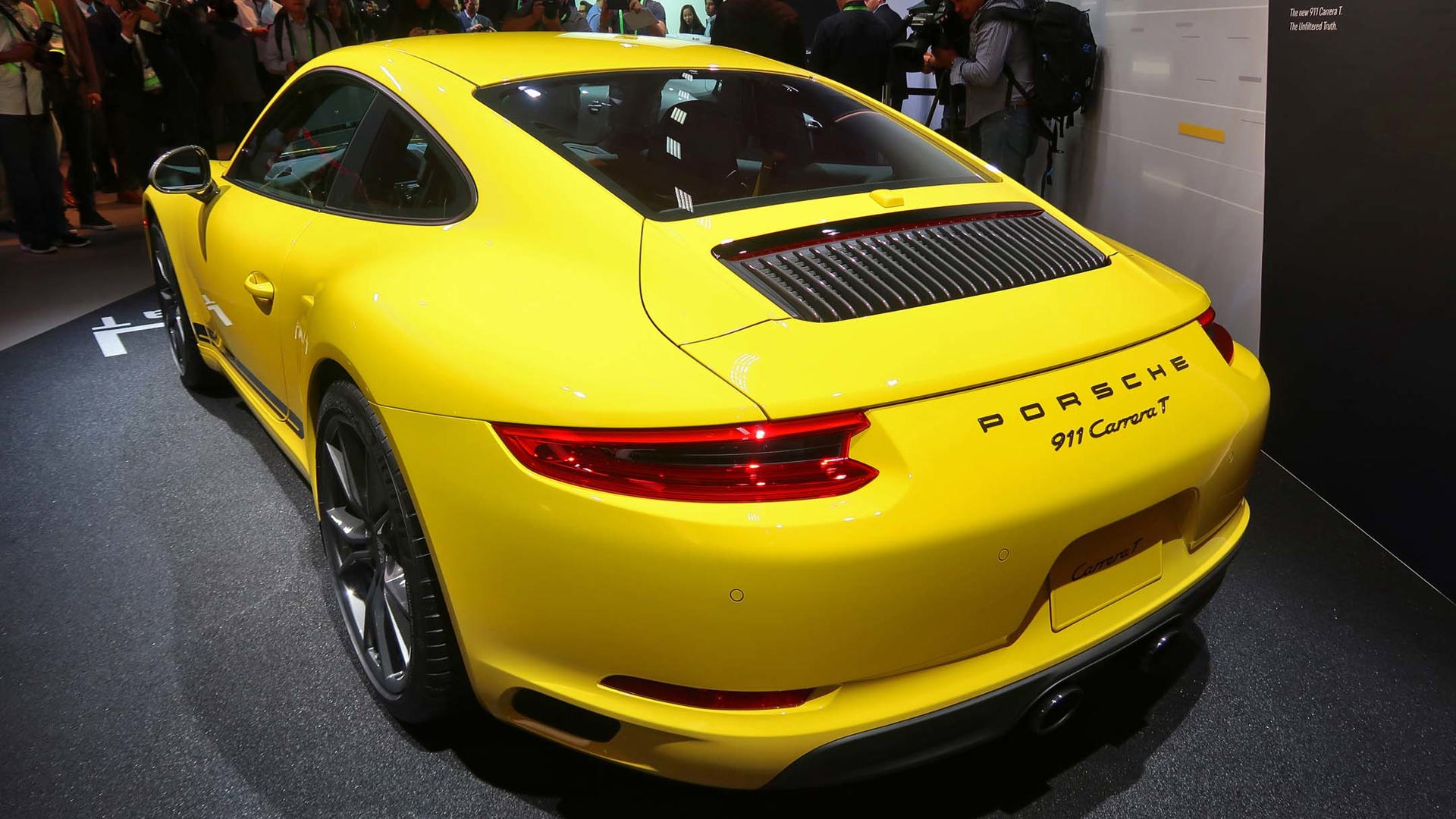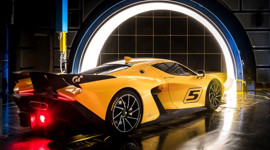LOS ANGELES – Never mind the entire United States; if California alone were a country on its own, it would be Porsche’s fifth largest global market. And so it was there the German automaker took the wraps off several models for the first time worldwide: the Porsche 718 Boxster GTS, 718 Cayman GTS, 911 Carrera T, and the Panamera Turbo S E-Hybrid Sport Turismo, along with the North American premiere of the all-new Cayenne.
Unlike the last Boxster and Cayman GTS models, which used a naturally aspirated six-cylinder engine, these 2018 versions carry a turbocharged 2.5L four-cylinder, making 365 horsepower – 35 more ponies than the six – along with 310 lb-ft of torque when equipped with the six-speed manual, and 317 lb-ft should you opt for the Porsche Doppelkupplung, or PDK, the seven-speed double-clutch automatic transmission.

Zero to 100 km/h can go by as quickly as 4.1 seconds, and the Sport Chrono Package includes a Track Precision App that analyzes and downloads your performance and lap times to your phone. In Canada, the Boxster will start at $93,000, while the Cayman clicks on at $90,600.
It’s power that’s the bragging right, not the number of cylinders, and enthusiasts should embrace this smaller new engine, says Michael Steiner, member of Porsche’s board of research and development. The new models are further enhanced with torque-vectoring, active suspension that lowers the body by 10 millimetres, and GTS-specific black accents, including the light surrounds, rear apron, tailpipes, and 20-inch wheels.

The new 911 Carrera T pays homage to the original Carrera T rally racer of 1968, but with a considerable improvement over that classic model’s 110 horsepower. “I got the idea to build a basic, sporty 911 during my visits to the Rennsport Reunion [for Porsche fans] in California,” said August Achleitner, director of the 911/718 product line, in an exclusive interview with autoTRADER.ca. “Enthusiasts are looking for these special varieties, and I said we should take care of the customers who are just able to buy the entry 911, not the high-end version, and so we made something special with the base car.”
The Carrera T’s 3.0L twin-turbo six-cylinder makes 370 horsepower, along with 332 lb-ft of torque. Achleitner considered offering only a seven-speed manual, but since so many 911 customers order the PDK, the automatic will be optional. However, the manual has been tweaked with shorter ratios over the base Carrera. It will use a bit more fuel, Achleitner says, but that’s not something that worries most enthusiasts. The 911 Carrera T also includes a sport exhaust and choice of leather or cloth interior, but unless you specifically order them, there are no rear seats.

Porsche also unwrapped the Panamera Turbo S E-Hybrid Sport Turismo (now there’s a mouthful), which will be the flagship of this four-door’s lineup. It uses a 4.0L twin-turbo V8 gasoline engine, mated with a hybrid electric system. Working together, they produce 680 horsepower and 627 lb-ft of torque.
It’s a plug-in hybrid, and once it’s fully charged, it can travel a maximum of 49 kilometres on battery alone. Once the charge depletes, the car automatically reverts to conventional gasoline-electric hybrid operation.

The new Cayenne marks the model’s third generation. It launches in three versions: the Cayenne, with 340 horsepower turbocharged V6; the Cayenne S, with 440 horsepower twin-turbo V6; and the Cayenne Turbo, with a twin-turbo V8 cranking out 550 horsepower and 568 lb-ft of torque. All models use an eight-speed Tiptronic transmission, and feature a longer, lower body, an additional 100 litres of cargo space, optional adaptive air suspension, and available electric rear-axle steering. In Canada, pricing is $75,500 for the Cayenne, $92,600 for the Cayenne S, and $139,700 for the Cayenne Turbo.




















